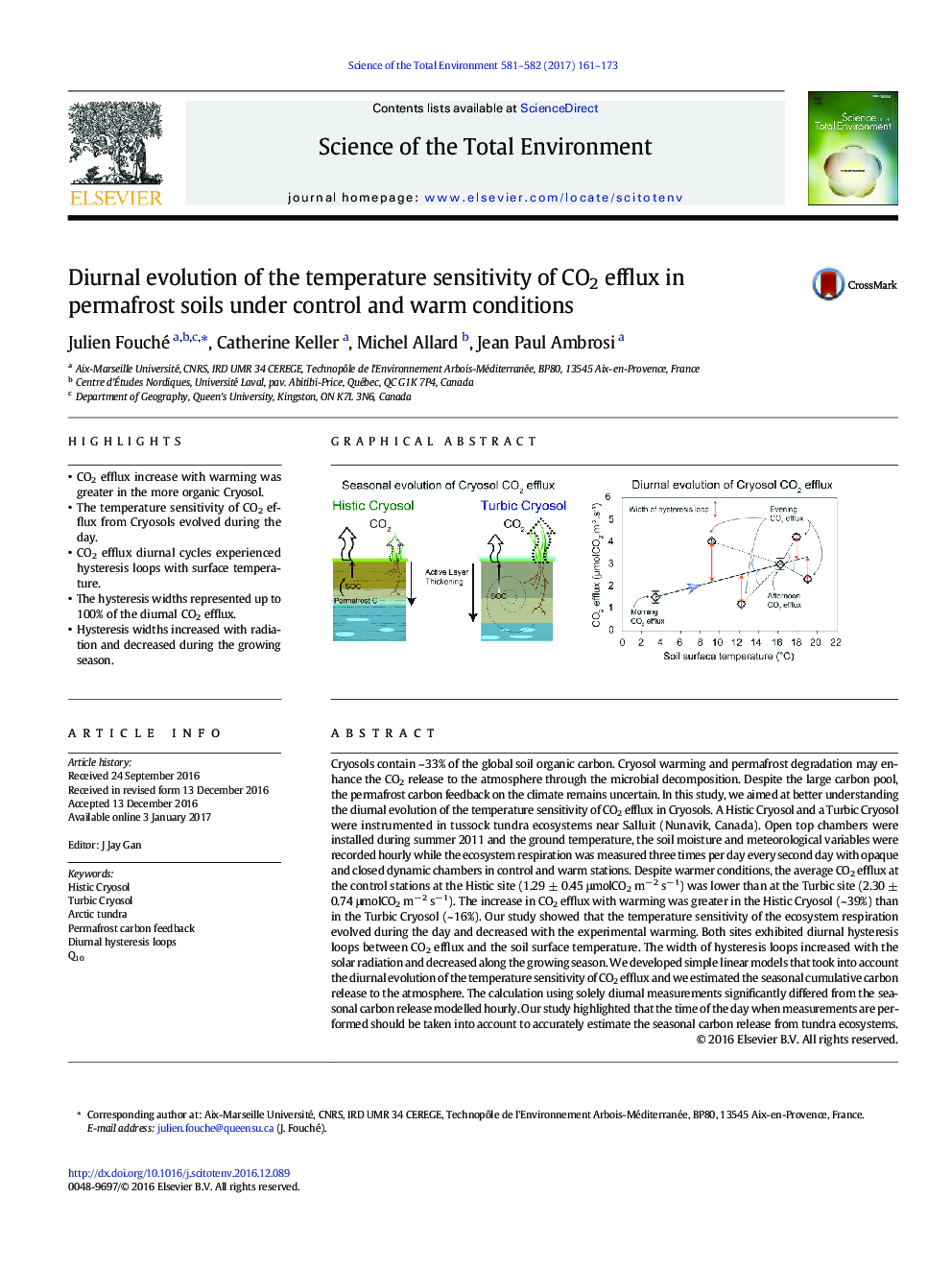| کد مقاله | کد نشریه | سال انتشار | مقاله انگلیسی | نسخه تمام متن |
|---|---|---|---|---|
| 5751765 | 1619710 | 2017 | 13 صفحه PDF | دانلود رایگان |

- CO2 efflux increase with warming was greater in the more organic Cryosol.
- The temperature sensitivity of CO2 efflux from Cryosols evolved during the day.
- CO2 efflux diurnal cycles experienced hysteresis loops with surface temperature.
- The hysteresis widths represented up to 100% of the diurnal CO2 efflux.
- Hysteresis widths increased with radiation and decreased during the growing season.
Cryosols contain ~ 33% of the global soil organic carbon. Cryosol warming and permafrost degradation may enhance the CO2 release to the atmosphere through the microbial decomposition. Despite the large carbon pool, the permafrost carbon feedback on the climate remains uncertain. In this study, we aimed at better understanding the diurnal evolution of the temperature sensitivity of CO2 efflux in Cryosols. A Histic Cryosol and a Turbic Cryosol were instrumented in tussock tundra ecosystems near Salluit (Nunavik, Canada). Open top chambers were installed during summer 2011 and the ground temperature, the soil moisture and meteorological variables were recorded hourly while the ecosystem respiration was measured three times per day every second day with opaque and closed dynamic chambers in control and warm stations. Despite warmer conditions, the average CO2 efflux at the control stations at the Histic site (1.29 ± 0.45 μmolCO2 mâ 2 sâ 1) was lower than at the Turbic site (2.30 ± 0.74 μmolCO2 mâ 2 sâ 1). The increase in CO2 efflux with warming was greater in the Histic Cryosol (~ 39%) than in the Turbic Cryosol (~ 16%). Our study showed that the temperature sensitivity of the ecosystem respiration evolved during the day and decreased with the experimental warming. Both sites exhibited diurnal hysteresis loops between CO2 efflux and the soil surface temperature. The width of hysteresis loops increased with the solar radiation and decreased along the growing season. We developed simple linear models that took into account the diurnal evolution of the temperature sensitivity of CO2 efflux and we estimated the seasonal cumulative carbon release to the atmosphere. The calculation using solely diurnal measurements significantly differed from the seasonal carbon release modelled hourly. Our study highlighted that the time of the day when measurements are performed should be taken into account to accurately estimate the seasonal carbon release from tundra ecosystems.
263
Journal: Science of The Total Environment - Volumes 581â582, 1 March 2017, Pages 161-173